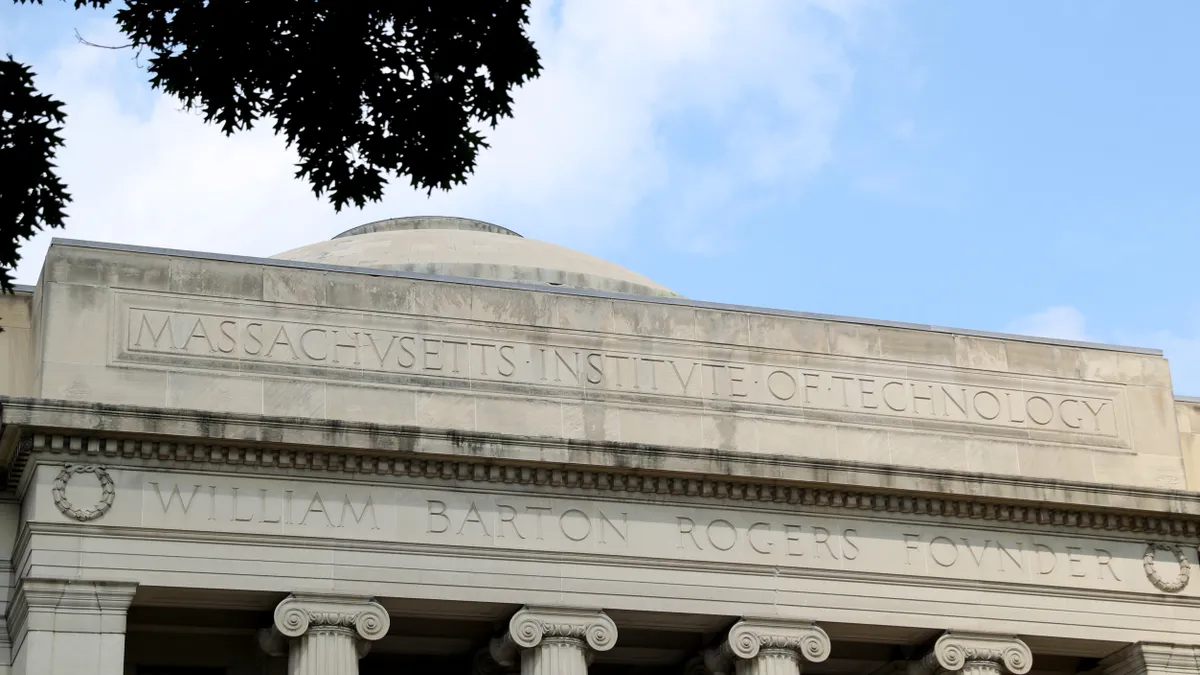Enrollment, finances, immigration, free speech. Many of the issues expected at the top of college presidents' work lists are carryovers from last year, with a few new wrinkles.
Higher ed watched this summer as one public system reacted to drastic cuts in state funding. And college leaders raised yet more flags that the current political climate is threatening the supply of international students. Meanwhile, issues around Title IX are likely to heat up again with the expected release of new regulations this fall.
"It's in many ways more of the same as well as a bunch of new complications," said Terry Hartle, senior vice president of government and public affairs at the American Council on Education (ACE).
An 'existential threat'
Flagging enrollment has long been a concern for college leaders, but projections of a decrease in high school graduates in the next decade has created a sense of urgency around finding new student pipelines.
"It's not eclipsing every other issue but it's certainly becoming kind of an existential threat for a lot of institutions," said David Attis, managing director of strategic research at consulting firm EAB. He said he often tells colleges they'll no longer be able to grow net tuition revenue from traditional students alone.
Reaching out to working adults and transfer students, as well as improving retention, can help colleges blunt the effects of those changes. Strategies for the latter, he noted, can include using predictive analytics to target advising and offering microgrants to help students afford costs beyond freshman year.
"People are allocating more financial aid toward targeting retention in a way they might have heard of before but they weren't actually doing that much about it," he said.
Supporting international and undocumented students
Tighter immigration policies that make it harder to obtain or extend visas and political rhetoric that could make international students feel unwelcome is increasing college leaders' concerns over shrinking headcounts, Attis said.
Fewer new international students are enrolling in U.S. institutions, with their count down 6.6% year-over-year in 2017-18, according to the Institute of International Education.
The political situation has been marked as the catalyst, but some scholars argue that other factors, such as high tuition and more competition abroad, are also contributing.
T. Dwayne McCay, president of the Florida Institute of Technology (Florida Tech), said the share of international students in his private nonprofit college's incoming freshman class sank from a steady 30% over the last two decades to 17% this year. That's compared to a decrease of about 3% to 4% in total enrollment.
"The climate has changed," he said, noting that Florida Tech may look to new regions for students, such as North Africa and Eastern Europe, having long pulled mostly from China, Saudi Arabia and India.
Attis said colleges should be savvy to what's drawing students to the U.S. "It used to be, 'Go to the place that has the best research reputation,'" he said. "Now there are international students who are saying, ‘What institution has the best career services for international students?"
To that end, more colleges are using workarounds to help international students access internships and other employment after reports of delays in federal Optional Practical Training authorization, which allows them to temporarily work in their field of study in the U.S. after graduation. Some programs, particularly business schools, are getting their degrees STEM-certified, which allows graduates to work in the U.S. longer after graduation.
Other institutions are lowering tuition for international students. And college leaders have pressed the government to speed up visa processing.
Still, the issue is likely to persist. Just this week a Harvard University freshman arriving from Lebanon said he blocked from entering the country due to posts by people on his social media.
"It used to be, 'Go to the place that has the best research reputation.' Now there are international students who are saying, 'What institution has the best career services for international students?'

T. Dwayne McCay
President, Florida Tech
Elite research universities will likely fare better in attracting international students than will smaller colleges that aren't well-known abroad, mirroring trends among enrollment of U.S. students, experts say.
Within the U.S., policies targeting individuals who are undocumented are affecting college students, though not all campuses are affected similarly, said Martha Parham, senior vice president of public relations at the American Association of Community Colleges.
"Some of our colleges have come straight out and named themselves sanctuary colleges and are trying to tackle it head-on and some have not," she said of responses to measures such as those by Immigration and Customs Enforcement to target individuals who are undocumented.
Colleges are adding, or expanding, legal services and financial aid for those students. Meanwhile, the Supreme Court is expected to hear oral arguments in November over the Trump administration's plan to rescind the Deferred Action for Childhood Arrivals program.
'Anticipating' free speech concerns
Controversies over free speech "will continue to be at the forefront of public discussion and private debate" this year, said Lynn Pasquerella, president of the Association of American Colleges & Universities.
"It surprised a lot of people last year and the year before," she said. "Now everyone is anticipating it, so I think they've got more time to prepare."
This follows an academic year that included a vague executive order tying research funding for public universities to their ability to "promote free inquiry" on campus.
More protests and other pushback on campus speakers and events is expected in the run-up to the 2020 presidential election.
College leaders can help manage fallout by fostering "community conversations about the importance of academic freedom and the ways in which the academy is built on the free exchange of ideas," she said, adding that they should "be clear about standards of civility, what constitutes acceptable discourse in terms of furthering the actual debate, and what constitutes hate speech."
That can include ensuring events such as community forums are hosted in conjunction with a visit from a controversial speaker, she noted.
Policy primer
In addition to visa and immigration concerns, Hartle expects the release of the U.S. Department of Education's final Title IX regulations this fall to be a policy area college leaders pay attention to.
"The draft regulations were probably the most controversial NPRM (notice of public rulemaking) that the (department) had ever issued," he said of the rules, which drew more than 100,000 comments. "I expect that the final regulations will be no less controversial." Lawsuits are expected, he added.
Reauthorization of the Higher Education Act appears increasingly unlikely, though smaller pieces of legislation with strong bipartisan support — such as an effort to simplify the FAFSA form — could make it through this session. Higher education funding will be up for discussion as Congress finalizes the 2020 federal budget.
Meanwhile, discussions of a broader policy on free college may stall if Democrats forgo pushing smaller bills on the measure in favor of having it as an election issue.
"Any way you look at it in terms of short-term likelihood for significant changes in federal policy unrelated to funding and regulation seems pretty low," he said. "If we're waiting for Congress to act, we might be waiting a long time."
Funding woes
Reduced state funding, declining enrollment projections and growing competition in alternative revenue streams such as online education have colleges concerned about their bottom lines. That's particularly true for smaller institutions.
McCay said Florida Tech, which enrolled about 6,300 students in the fall of 2018, is responding by focusing on fundraising.
Florida Tech is not alone. Several large campuses, such as Penn State, and small ones, including Hiram College, announced record-breaking fundraising campaigns in recent months, aided in part by a strong stock market. Greater use of giving days, online solicitations and peer networks helped and are expected to continue.
Yet even with some success on the fundraising front, smaller colleges are having to get creative to survive. St. John's College recently cut its posted tuition price by one-third and is now fundraising to increase its endowment to support the reset. Others are sharpening their value propositions around leadership development and hands-on learning to attract students, which in some cases involves making major cuts.
There's more to be done, EAB's Attis said.
"That change management question has never been more important," he said, "but the governance process doesn't really facilitate the bold moves that I think some institutions need to make."


















